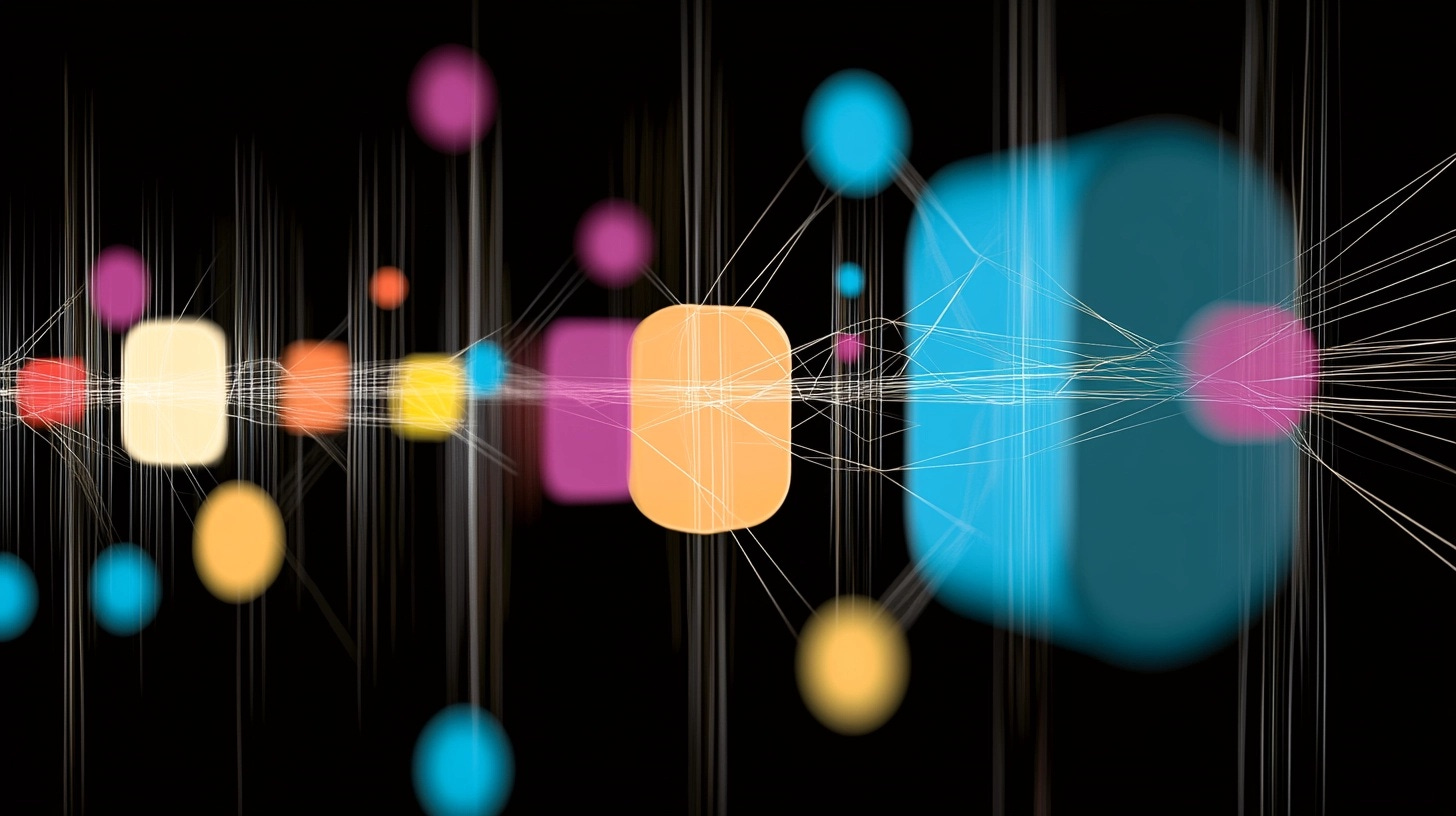A Granular Rule-Based Relational Logic Layer:
Insights from Sanskrit’s Precision and a Sandhi-Inspired NLP
AI excels at pattern recognition but often falters with nuanced linguistic transitions, context-sensitive boundaries, and interpretability. Lately, I’ve been questioning these limitations and uncovering intriguing results—results that I work to verify as best as I am able. Certainly there maybe errors. The project however has assuredly been validated by 3 different AI LLMs. for what’s that worth.
This paper integrates two complementary strands:
(1) Sanskrit’s Sandhi and Pāṇinian grammatical principles, where context-sensitive phonetic/morphological merges and generative clarity can inspire tokenization, dynamic embedding adjustments, and morphological intelligence in NLP (natural language processing) systems;
(2) A Granular Rule-Based Relational Logic Layer, illustrating how Sanskrit’s finite yet comprehensive rules, explicit role marking, and step-by-step transformations can guide AI toward greater interpretability and cross-lingual adaptability. We propose practical strategies for building rule-based tokenizers, transition embeddings, morphological analyzers, and experimental protocols to demonstrate how these principles can improve model performance and reduce ambiguity in tasks like sentiment analysis, machine translation, and speech synthesis.
1. Introduction
Recent advances in Large Language Models (LLMs) have yielded remarkable successes in natural language tasks, but issues remain with morphological nuances, boundary contexts, and interpretability. Sanskrit, a language with rigorously codified rules and morphological transformations (Sandhi), provides a unique lens for tackling these problems.
- Sandhi: Illustrates local boundary transformations for euphonic and morphological coherence.
- Pāṇini’s Finite Rules: Demonstrate how a concise, modular system can generate a vast range of expressions without ambiguity.
- Relational Logic: Sanskrit’s explicit case marking shows how roles and relationships might be treated explicitly in AI architectures.
We combine a practical look at Sandhi-inspired NLP (tokenization, embeddings, etc.) with a broader discussion of Sanskrit’s relational rule-based logic to argue for more transparent and context-aware AI.
2. Overview of Sanskrit’s Sandhi
Sandhi deals with context-dependent phonetic or morphological transformations at word/morpheme boundaries:
- Example: “saḥ + asti” -> “sasti.”
- Systematic, Not Just Aesthetic: Each rule is codified for specific adjacency conditions.
- AI Parallel: Boundaries in subword tokenization can benefit from contextual adaptation, improving model fidelity to linguistic reality.
3. From Linguistic Principles to NLP Implementation
3.1 Context-Sensitive Tokenization
- Problem: Common tokenization methods ignore local morphological/phonetic merges.
- Sandhi-Inspired Solution:
1) Maintain a rule database for adjacency-based merges.
2) Modify tokenizer to “look ahead/behind” and insert transformation markers. - Benefits: Reduces fragmentation, aligns token splits with morphological reality.
3.2 Dynamic Embedding Adjustments - Motivation: Standard transformers rarely apply explicit transformations for boundary contexts.
- Mechanism:
1) Compute a transition embedding Δ_{i, i+1} reflecting morphological merges.
2) Integrate Δ_{i, i+1} into the embedding or attention layers. - Outcome: Enhanced boundary sensitivity and recognition of subtle context shifts, such as negation or morphological nuance.
We can heighten the model’s sensitivity to subtle morphological or phonetic cues. The approach is technically achievable—requiring only a morphological/rule engine plus minimal modifications to the embedding or attention steps—and promises improved performance on tasks where boundary nuances are critical (sentiment analysis, machine translation, morphological tagging, etc.). This is how a Sandhi-inspired mechanism moves from high-level theory to tangible enhancements in NLP systems.
4. Applications and Practical Directions
4.1 Sentiment Analysis
- Subtle morphological cues (e.g., negation prefixes) can drastically change sentiment.
- A Sandhi-aware tokenizer or embedding approach can flag these transitions early, improving classification accuracy, especially on edge cases.
4.2 Text Generation / Machine Translation
- Context-sensitive morphologies (like in Sanskrit) challenge conventional MT systems.
- Sandhi Integration:
1) Track morphological environment during decoding.
2) Insert morphological boundary tokens, prompting merges or assimilation.
- Results: More fluent text generation, fewer morphological errors.
4.3 Speech Synthesis (TTS)
- Sandhi rules address how phonemes blend at boundaries for smoother output.
- Implementation: On-the-fly merging of phoneme transitions based on rule sets.
- Benefit: More natural prosody in languages with assimilation at word boundaries.
5. Technical Feasibility: Tools and Libraries
- Morphological Analyzers (SanskritSubanta, IndicNLP) can be extended to handle Sandhi.
- Custom Tokenizers (Hugging Face) allow injecting rule-based merges.
- Transformer Forks: Extend attention or embedding layers to accommodate transition embeddings.
6. Measuring Impact and Experiments
- Tokenization Quality: Evaluate morphological splits via error rates.
- Sentiment Analysis Accuracy: Baseline vs. Sandhi-inspired boundary embeddings on negation/morphological twist datasets.
- Language Modeling Perplexity: Introduce synthetic boundary merges and measure perplexity differences.
- TTS Naturalness: Mean Opinion Scores (MOS) on boundary-aware vs. standard TTS.
7. A Granular Rule-Based Relational Logic Layer: Insights from Sanskrit’s Precision
Beyond Sandhi, Sanskrit’s grammar codified by Pāṇini provides a broader blueprint for “finite-yet-comprehensive” language generation with explicit role marking.
7.1 Finite Rules, Infinite Outputs
- Pāṇini’s Aṣṭādhyāyī: ~4,000 rules generating a vast range of valid expressions.
- Parallel to AI: A modular, rule-based system fosters clarity in transformation steps.
7.2 Morphological Clarity and Tokenization
- Sanskrit words decompose into roots (dhātus) and affixes, enabling traceability and reducing the “rare word” problem.
- AI can adopt morphological decomposition for more interpretable tokenization.
7.3 Context-Free Grammar Meets Relational Reasoning
- Sanskrit’s case markers (vibhaktis) reduce syntactic ambiguity, clarifying subject, object, or instrument roles.
- In AI, explicit role labeling can ease semantic confusion and improve cross-lingual parsing.
8. Logical Layering and Interpretability
- Layered Rules: Each transformation is traceable, supporting step-by-step interpretability in neural or neuro-symbolic approaches.
- Cross-Lingual Potential: Rich morphological logic can serve as a pivot representation for low-resource languages, improving generalization.
9. Relational Reasoning in Language Modeling
- N-Gram Statistics vs. Relational Roles: Sanskrit-like case marking encourages explicit role representation, aiding co-reference and disambiguation.
- Human-Centric Benefits: Rule-based morpho-syntactic transformations provide a rationale for the model’s outputs, enhancing accountability.
10. Implementation Steps
- Data Acquisition: Use annotated Sanskrit corpora (Digital Corpus of Sanskrit) with morphological tags.
- Hybrid Architecture: Combine standard transformers for distributional semantics with symbolic modules for morphological transformations.
- Evaluation: Track ambiguity reduction and cross-lingual performance gains.
11. Conclusion
By uniting Sandhi-inspired context-sensitive boundary handling with the broader precision of Sanskrit’s finite, rule-based grammar, we propose a more interpretable and robust AI paradigm. Applications span sentiment analysis, machine translation, and TTS, each benefiting from morphological awareness and explicit role marking.
Future work includes releasing open-source “Sandhi-aware” tokenizers and systematically testing them across morphologically diverse languages.
References (Selected)
[1] Pāṇini. Aṣṭādhyāyī. (4th century BCE)
[2] Hellwig, O. (2010). The Digital Corpus of Sanskrit. The Sanskrit Library.
[3] Devlin, J., Chang, M.-W., Lee, K., & Toutanova, K. (2019). BERT: Pre-training of Deep Bidirectional Transformers for Language Understanding. In NAACL-HLT.
[4] Brown, T. et al. (2020). Language Models are Few-Shot Learners. In NeurIPS.
[5] Ruyer, R. (1954). La cybernétique et l'origine de l'information.
[6] Levin, M. (2019). The Computational Boundary of a “Self”: Morphogenesis as a Model for Cognition. Progress in Biophysics and Molecular Biology.






